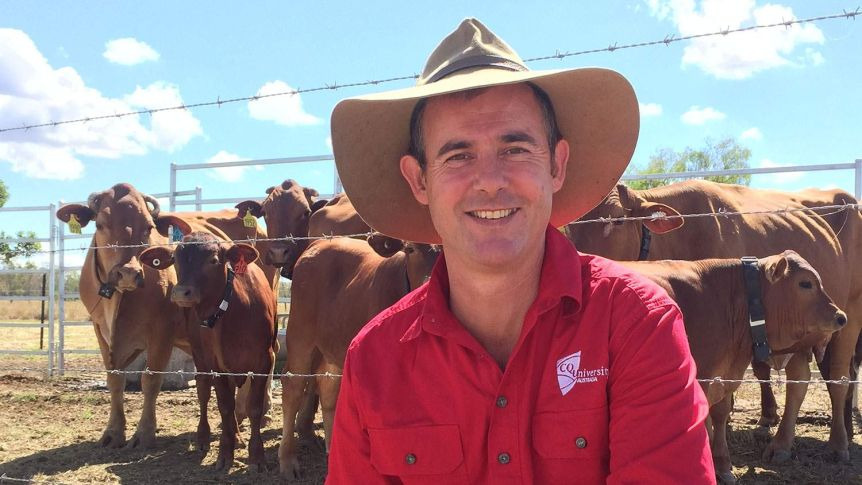Selection theory a mother of an idea

Central Queensland University senior research fellow Dr David Swain. Source: SUPPLIED
CATTLE producers may be culling the wrong females if they base decisions solely on weaning weights.
Research into the social behaviour of cattle has found "good mothers" typically spent more time with their own calf, leading to higher growth rates.
But they were more likely to not get in calf the next year and therefore were at greater risk of being culled out of the herd.
By contrast, "bad mothers" tended to be the older cows who had less contact with their own calves, which were likely to have lower growth rates. Because more nutrients were being retained by the cow, she was more likely to calve every year and be kept in the herd.
Central Queensland University senior research fellow Dr David Swain said decisions made solely on estimated breed value selection indices meant herd managers were "perversely selecting against good mothers".
Dr Swain said studying the social behaviour of cattle provided clues to the relative influences of nurture on nature, and cultural inheritance on genetic inheritance in terms of economically important variations, such as diet selection, fertility, calving dates and stressors.
One example he cited was a comparison of branding rates on a Northern Territory cattle station over a 15-year period from 1989 to 2004.
Located on the Barkly Tablelands, Eva Downs is 150,000ha and runs 20,000 head, half breeders. It has been owned by Australian Agricultural Company since mid-2006.
Separated into 12 paddocks, groups of cattle had been kept together in mobs for their entire lives. The drafting system was changed in 1998, with cows drafted according to their pregnancy status.
"This completely disrupted the social groupings of those animals," Dr Swain said. "They gave up (after three years) because it had such significant impacts on branding percentages."
Branding rates plummeted by almost half but, after the previous system was reinstated, returned to the usual levels of 70-80 per cent.
Dr Swain told delegates to a precision agriculture symposium at Mildura last month that researchers had traditionally used personal observation to get information about animals.
But this was time consuming, made it difficult to track large groups of animals, especially at night, and there were questions about how the presence of people might cause animals to modify behaviour.
US virtual fencing pioneer Dean Anderson used a cumbersome device fitted to a cow's head and a combination of GPS tracking and audible and electric stimulus to guide them in preferred directions.
Dr Swain said his own research involved much smaller proximity logging devices attached to collars on up to 200 head at a time.
The small radio transceivers register a signal when animals came within 4m of each other and measured the duration of contact.
"They provide detailed behavioural information . . . over weeks or months and minimise disturbance of animals," he said.
The loggers confirmed cows spent more time with their own calf than with all the other calves and provided data on the differences between "good" and "bad mothers".
They showed cows generally associated more with other cows at the same stage - pregnant, calved or dry - and moved from one group to another within the herd as circumstances changed.
Available as a research tool, the collars cost about $400 to make.
Dr Swain said commercialisation - which would reduce the cost and might lead to smaller units - by the technology sector would depend on the level of interest and adoption.
